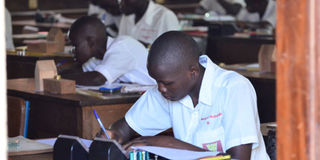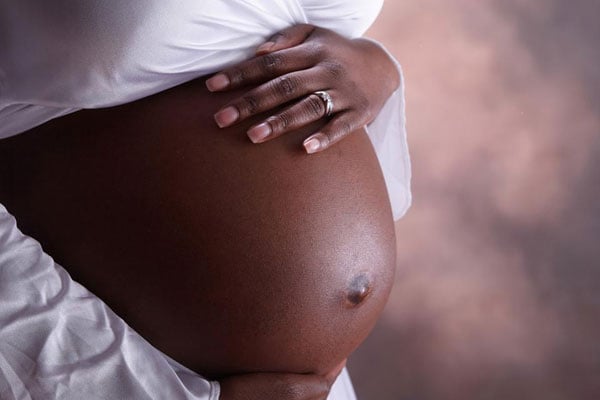Can continuous assessment solve exam wrangles?

Education experts say it is high time policy makers adopted continuous assessment as opposed to standardised examinations as a solution to some of the flaws in the system. File photo
The recent Primary Leaving Examinations and Uganda Certificate of Education national examination results were followed by a couple of events, one of which was a heated social media debate on the relevance of standardised national examinations and whether they should be scrapped off.
“We have become so acquainted to national examinations that at the end of the day, it is almost predictable how it will all go down. We have seen schools and students caught cheating examinations and pictures of examinations making rounds on social media the day before the actual exam.
And the minute results are released, schools, parents and students are seen celebrating their triumph and success in all kinds of styles, the examination body holding student results on allegations of malpractice while others nurse wounds of failure,” Glorious Nafuna, a parent and fellow at the Uhuru Institute of Social Development, explains.
Similarly Alexander Muhangi says examinations no longer make sense.
“First of all, we can no longer trust that all students and schools are treated the same especially when it comes to exam malpractice but also, they largely encourage cram work instead of impactful learning,” he notes, adding that if there is a better way, the assessment body better employ it.
The question of failures
While releasing PLE results in Kampala recently, the executive secretary of Uneb, Dr Daniel Odongo, said out of the 655,698 who sat for the exams, 599,593, (91.4%) passed in various divisions and that 56,398 (8.6 %) candidates failed. At UCE, Dr Odongo said 42,334 students failed to attain any grade and are supposed to repeat Senior Four.
These pronunciations do not come as a surprise. The same has been said for decades. And this has left several education stakeholders wondering how selected questions answered in two or three hours can be used to justify the number of years a student spent learning.
Emily Kiwumulo, a teacher at Blessed Primary School, Bwaise says examinations encourage students to work hard. According to her, when a student in an upcountry school knows they are going to compete with those from urban schools, they put in more effort.
She also shares that continuous poor performance does not necessarily mean the method of assessment is bad. “It means that the teaching has a problem and that is what we need to improve,” Kiwumulo says.
“Currently, national examinations are everything. Four papers done at the end of seven years of primary school determine the fate of your child and the secondary school they will attend. That is sad,” Nafuna argues.
But what happens to students that for one reason or another get distractions during or towards exams that are beyond their control? For instance a good performer can fall ill during exams or lose a parent, among other unfortunate incidents. If they fail, they will be forced to repeat the class, join a school or course that is not their preference.
Are there any lessons learnt from this overtime? Could there be a better way of assessing a student’s performance? Is continuous assessment the drug that might bring some of the squabbles that follow results to rest?
The discrepancies
Dr Christopher Mulwanya an educationist and author ‘A critical look at Uganda’s education system’ a policy paper, notes that continuous assessment allows the teacher to focus on the teaching and learning processes and evaluate students, not over a long period of time, but on a daily or weekly basis because in the end, what matter is that students get the intended learning outcomes not just the grades. He further notes that there are a number of issues national examinations do not take into account.
“First of all, a child is marked by a total stranger who never taught them. How can someone who never taught me assess me? Secondly, it does not take into account the student as a whole person. Some children sit exams when they have lost their parents/ relatives, going through family problems, when they are depressed, some are sick, or they just forget things out of fear during the exam. Their previous performance is not considered but this single exam sums up everything, which is not fair,” he asserts.
Matter of fact, Dr Mulwanya says the continuous assessment could be the answer to the widespread exam malpractice in the country.
“There won’t be a national exam, and so, nothing to prove in the stiff competition among schools who ride on examination results. At the end of all levels of education a student has what looks like a transcript with all his grades over the years,” he says.
What does it entail?
According to a 2017 UNESCO and International Bureau of Education review ‘Continuous Assessment for Improved Teaching and Learning: A Critical Review to Inform Policy and Practice’, continuous assessment employs unstructured and even spontaneous methods to identify students’ comprehension of a concept, content, or technique during instruction. This is to enable immediate adjustments to instruction to strengthen the learning of students, both individually and in groups.
“The role of continuous assessment, is to determine the student’s level of knowledge, skill, or understanding; to diagnose problems they may be facing, to make decisions about the next instructional steps to take (including whether to review or to move on); and to evaluate the learning that has taken place in a lesson,” the review reads in part.
At a school level, assessments are usually performed by teachers in the classroom to identify the level of learning of individual students (and sometimes of a class or some other grouping) on different aspects of the curriculum. These occur either for summative or formative purposes, and often their difference is in their purpose, the review explains.
The ‘summative’ purpose, also referred to as ‘assessment of learning’, is essentially to determine the level of a student’s cumulative achievements of a set of learning objectives. Among the common methods used for such assessments are tests, quizzes, substantive homework assignments, and projects.
Equally, ‘formative’ purpose, also referred to as ‘assessment for learning’ serves to provide indicators concerning the level of achievement of specific learning aims, the results of which serve to inform and stimulate actions. These actions may occur at the classroom, school, and system levels and can also involve quizzes and homework along with a variety of discrete tasks and other checks performed during a lesson, and simple keen observation. The reality is, however, both modes of assessment may serve both purposes.
A failed attempt?
In 2011, the National Curriculum Development Centre (NCDC) proposed continuous assessment at primary level which was piloted by Uneb but rather deserted due to a number of challenges encountered, funding inclusive. The NCDC coordinator, Remegious Baale, said continuous assessment was part of the ongoing education reforms process in Uganda.
“Under the new system, teachers would be required to use individual child progress card, to keep track of the children’s competence and performance,” Baale said, adding that this would be vital in creating a reliable picture of the learner’s strengths and weaknesses as specified in the syllabuses.
The system would, especially be important from Primary Four to Seven where all results from the various assignments will be stored and then retrieved for the final grading of the PLE.
Implementation
However, before implementation of such a policy, the Unesco review emphasises presence and implementation of certain principles.
For instance all continuous assessment must include clear processes to ensure that information is valid and is as reliable and necessary for its purpose. There may be many purposes for assessment in the classroom; assessment for, and of learning, of monitoring, of feedback and remediation, and more.
Continuous assessment should serve to strengthen teaching and learning. While this may imply most directly to what happens in the classroom, it also vitally generates information to guide the policies, plans, technical and material inputs, and other systemic factors, the review advises.
Even more importantly, the Unesco review emphasises that continuous assessment should focus on the student, featuring particularly the aspects of feedback and tailored guidance, or remediation as well as have positive impacts on factors beyond the classroom such as family, community, socio-cultural, environmental, economic or of any other nature.
If stakeholders do not move to amend the current system of assessment, then the ‘bright’ learners will keep passing while the ‘dull’ will fail.
Some of the Characteristics
These are some of the characteristics of continuous assessment:
• It is primarily the responsibility of the classroom teacher.
• It commonly covers learning of the full set of academic subjects.
• It allows educators to explore more deeply students’ abilities to apply academic lessons, including performing tasks based on the students’ local context and which can involve ‘hands-on’ elements and extend over time.
• It can be very precise and comprehensive in appraising and informing the cultivation of students’ personal competencies, including such skills, attitudes, and behaviors as collaboration, creativity, critical thinking, confidence, perseverance, curiosity, planning, and many more.
• It focuses on individual students and classrooms in ways, which pertain typically to decisions, and actions, which affect learners directly, whether immediately, or longer term.




